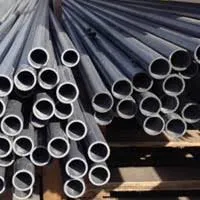
-
 Afrikaans
Afrikaans -
 Albanian
Albanian -
 Amharic
Amharic -
 Arabic
Arabic -
 Armenian
Armenian -
 Azerbaijani
Azerbaijani -
 Basque
Basque -
 Belarusian
Belarusian -
 Bengali
Bengali -
 Bosnian
Bosnian -
 Bulgarian
Bulgarian -
 Catalan
Catalan -
 Cebuano
Cebuano -
 China
China -
 China (Taiwan)
China (Taiwan) -
 Corsican
Corsican -
 Croatian
Croatian -
 Czech
Czech -
 Danish
Danish -
 Dutch
Dutch -
 English
English -
 Esperanto
Esperanto -
 Estonian
Estonian -
 Finnish
Finnish -
 French
French -
 Frisian
Frisian -
 Galician
Galician -
 Georgian
Georgian -
 German
German -
 Greek
Greek -
 Gujarati
Gujarati -
 Haitian Creole
Haitian Creole -
 hausa
hausa -
 hawaiian
hawaiian -
 Hebrew
Hebrew -
 Hindi
Hindi -
 Miao
Miao -
 Hungarian
Hungarian -
 Icelandic
Icelandic -
 igbo
igbo -
 Indonesian
Indonesian -
 irish
irish -
 Italian
Italian -
 Japanese
Japanese -
 Javanese
Javanese -
 Kannada
Kannada -
 kazakh
kazakh -
 Khmer
Khmer -
 Rwandese
Rwandese -
 Korean
Korean -
 Kurdish
Kurdish -
 Kyrgyz
Kyrgyz -
 Lao
Lao -
 Latin
Latin -
 Latvian
Latvian -
 Lithuanian
Lithuanian -
 Luxembourgish
Luxembourgish -
 Macedonian
Macedonian -
 Malgashi
Malgashi -
 Malay
Malay -
 Malayalam
Malayalam -
 Maltese
Maltese -
 Maori
Maori -
 Marathi
Marathi -
 Mongolian
Mongolian -
 Myanmar
Myanmar -
 Nepali
Nepali -
 Norwegian
Norwegian -
 Norwegian
Norwegian -
 Occitan
Occitan -
 Pashto
Pashto -
 Persian
Persian -
 Polish
Polish -
 Portuguese
Portuguese -
 Punjabi
Punjabi -
 Romanian
Romanian -
 Russian
Russian -
 Samoan
Samoan -
 Scottish Gaelic
Scottish Gaelic -
 Serbian
Serbian -
 Sesotho
Sesotho -
 Shona
Shona -
 Sindhi
Sindhi -
 Sinhala
Sinhala -
 Slovak
Slovak -
 Slovenian
Slovenian -
 Somali
Somali -
 Spanish
Spanish -
 Sundanese
Sundanese -
 Swahili
Swahili -
 Swedish
Swedish -
 Tagalog
Tagalog -
 Tajik
Tajik -
 Tamil
Tamil -
 Tatar
Tatar -
 Telugu
Telugu -
 Thai
Thai -
 Turkish
Turkish -
 Turkmen
Turkmen -
 Ukrainian
Ukrainian -
 Urdu
Urdu -
 Uighur
Uighur -
 Uzbek
Uzbek -
 Vietnamese
Vietnamese -
 Welsh
Welsh -
 Bantu
Bantu -
 Yiddish
Yiddish -
 Yoruba
Yoruba -
 Zulu
Zulu
GRP Water Tanks - Durable, Efficient Water Storage Solutions
Understanding GRP Water Tanks A Sustainable Solution for Water Storage
In today's world, the demand for efficient and sustainable water storage solutions is more crucial than ever. One prominent innovation in this field is the Glass Reinforced Plastic (GRP) water tank. GRP water tanks are increasingly being adopted across various industries due to their durability, lightweight, and corrosion-resistant properties.
What is a GRP Water Tank?
A GRP water tank is a storage unit constructed from a composite material that consists of glass fibers and resin. This combination creates a strong, lightweight structure that can withstand harsh environmental conditions. Unlike traditional water storage solutions like concrete or metal tanks, GRP tanks offer unique advantages that make them suitable for a wide range of applications.
Advantages of GRP Water Tanks
1. Durability One of the key benefits of GRP tanks is their long lifespan. The composite material is resistant to corrosion, making it ideal for areas with high humidity or where water quality may be a concern. Additionally, GRP tanks can withstand extreme temperatures, ensuring that they remain intact and functional even in challenging weather conditions.
2. Lightweight Design GRP tanks are significantly lighter than their metal or concrete counterparts. This characteristic makes them easier to transport and install, reducing the overall project time and cost. Their lightweight nature also means that less structural support is needed, allowing for more flexible installation options.
grp water tank

3. Low Maintenance GRP tanks require minimal maintenance compared to traditional water storage systems. Their smooth internal surfaces reduce the buildup of algae and bacteria, ensuring that the stored water remains clean and safe for consumption. Furthermore, their resistance to weather-related damage means that they do not require regular repainting or protective coatings.
4. Versatility GRP water tanks can be customized to meet specific storage needs, making them suitable for a variety of applications, including residential, industrial, and agricultural use. They can be manufactured in different sizes and shapes, providing flexibility for various installation sites.
5. Environmental Impact In an era where sustainability is paramount, GRP water tanks are an environmentally friendly option. They can be made from recycled materials, and their longevity reduces the need for frequent replacements, lowering their carbon footprint. Additionally, their lightweight nature contributes to reduced transport emissions during delivery.
Applications of GRP Water Tanks
GRP water tanks find utility in diverse sectors. In residential settings, they are often used for domestic water storage, rainwater harvesting, and fire protection. In industrial applications, they are critical for chemical storage, wastewater treatment, and process water supply. Moreover, in rural and agricultural contexts, GRP tanks facilitate irrigation and livestock watering.
Conclusion
As the global population continues to grow and water resources become increasingly strained, innovative solutions like GRP water tanks will play a vital role in sustainable water management. Their impressive durability, lightweight nature, and environmentally friendly attributes make them an attractive choice for anyone in need of reliable water storage. Investing in GRP water tanks not only addresses immediate water storage needs but also contributes to a more sustainable future. Whether for residential, industrial, or agricultural use, GRP water tanks stand out as a smart and efficient solution.









